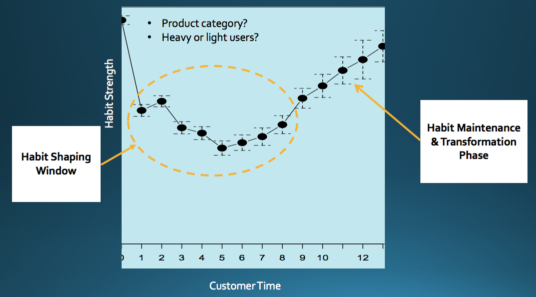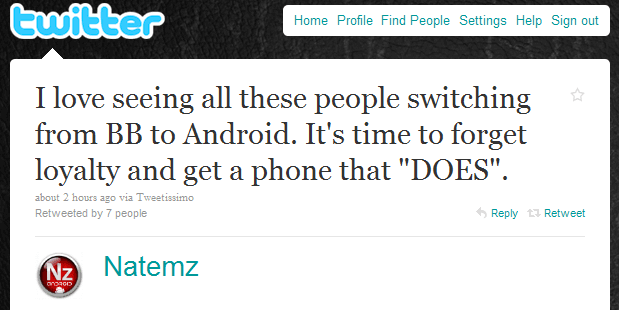Recently I had the honor of speaking at the Habit Summit, a cool conference on habit building and other behavioral design issues. I shared with the audience how companies can build better and more profitable customer habits through proper customer relationship management. This talk was the culmination of my more than 10 years of research on consumer habit by analyzing tons of customer data from a variety of industries including retail, financial, and travel industries. In this three-part blog series, I’d like to share some of those insights with you. In this part 1, I will talk about how to facilitate habit shaping and development in the customer acquisition phase. Then in part 2, I will discuss the role of habit in customer retention. Finally in part 3, I will share how to build on habit and even more importantly not mess up with habit in customer expansion strategies.
Habit Evolution Over Time
In my research, I have tracked the pattern of customer habit evolution over time. Again and again, I see a U-shaped curve like the figure below. In the beginning, consumers are new to the company. Although the novelty makes them buy frequently, there is a lot of exploration going on, trying to understand what the company has to offer. This is why you see a dip in habit in the figure. Then as consumers become familiar and comfortable, they settle into a more stable behavioral pattern and their habit strength associated with the company goes up.
What does this U-shaped curve mean to your business? It means that there should be two distinct phases in your habit strategy. The first part is what I call the habit shaping window, where your strategy should focus on leveraging consumers’ exploration tendency to shape the most desirable habit for your business. Then in the habit increase stage, your strategy should enter into a habit maintenance and transformation phase, focusing on sustaining habit and not disrupting it unnecessarily. More on that second phase in latter parts of the series. Let’s focus on the habit shaping window and what you should do in this phase for now. Continue reading “How to Build Customer Habits Through Customer Relationship Management Part 1”


